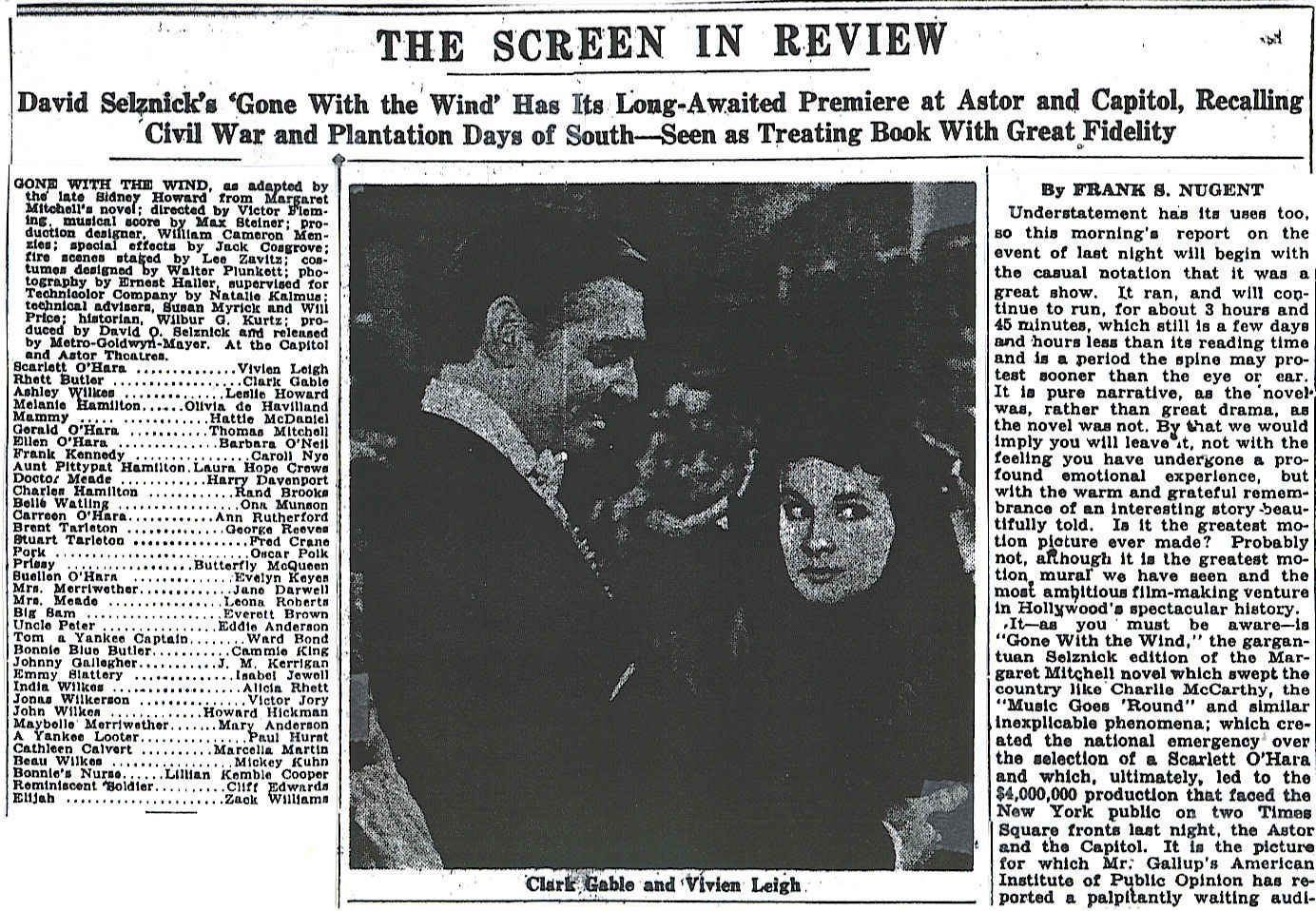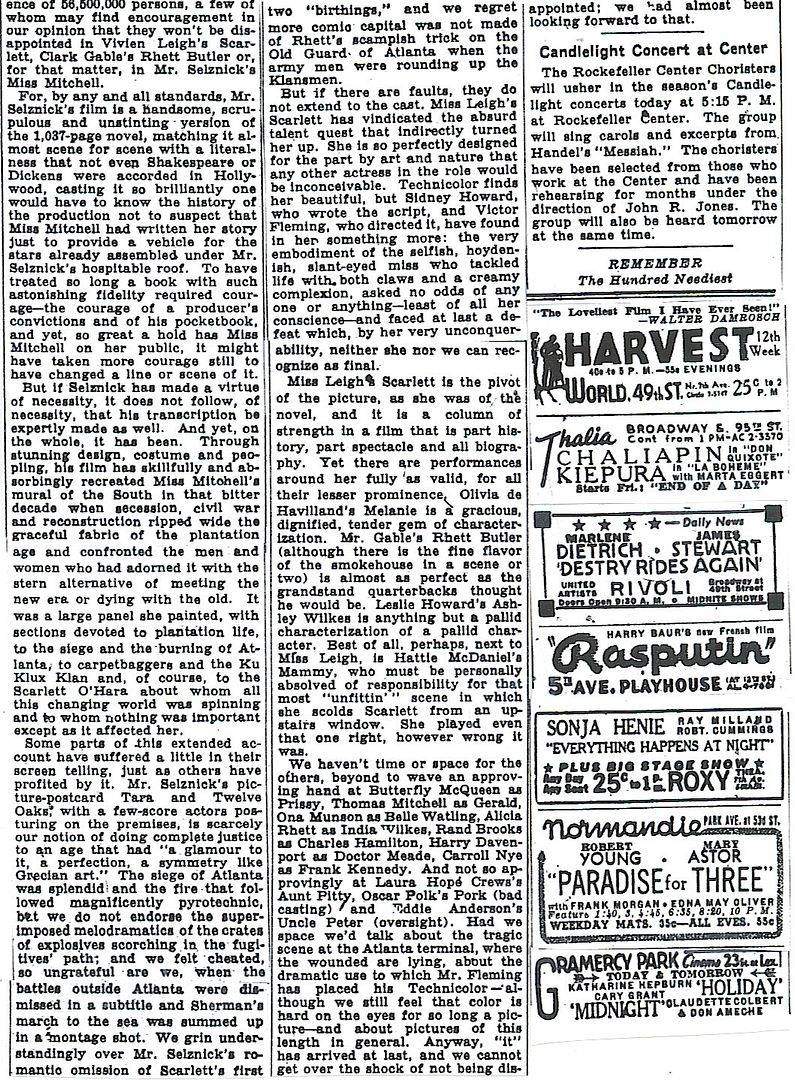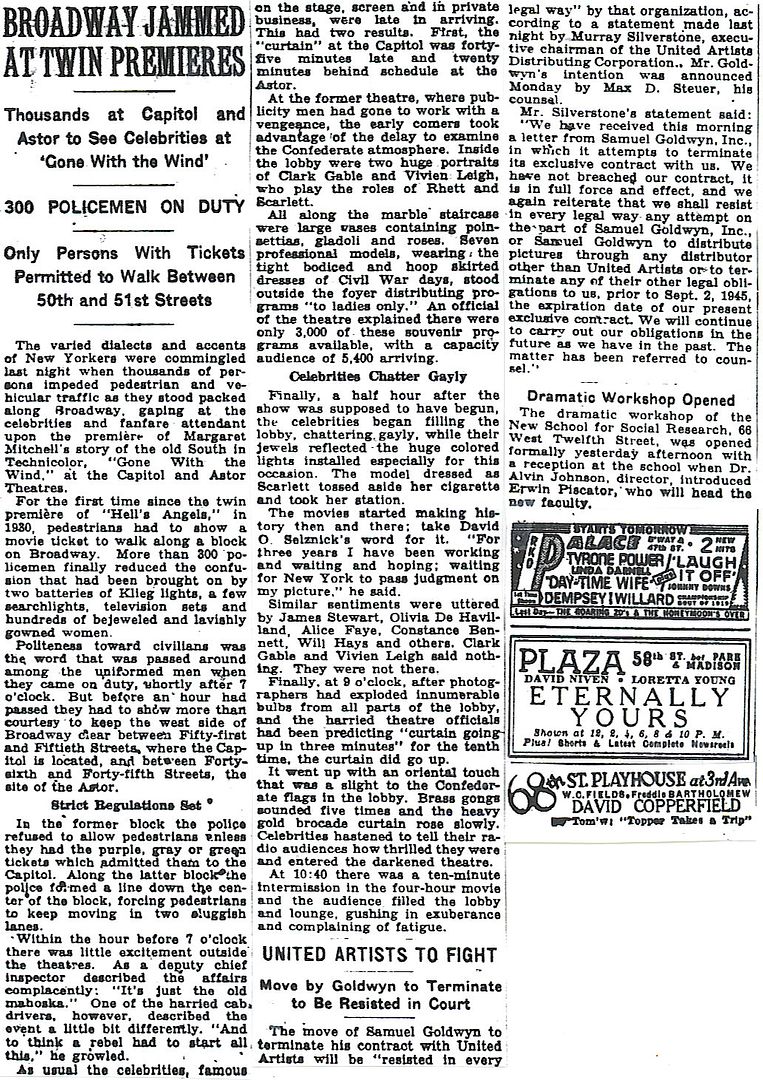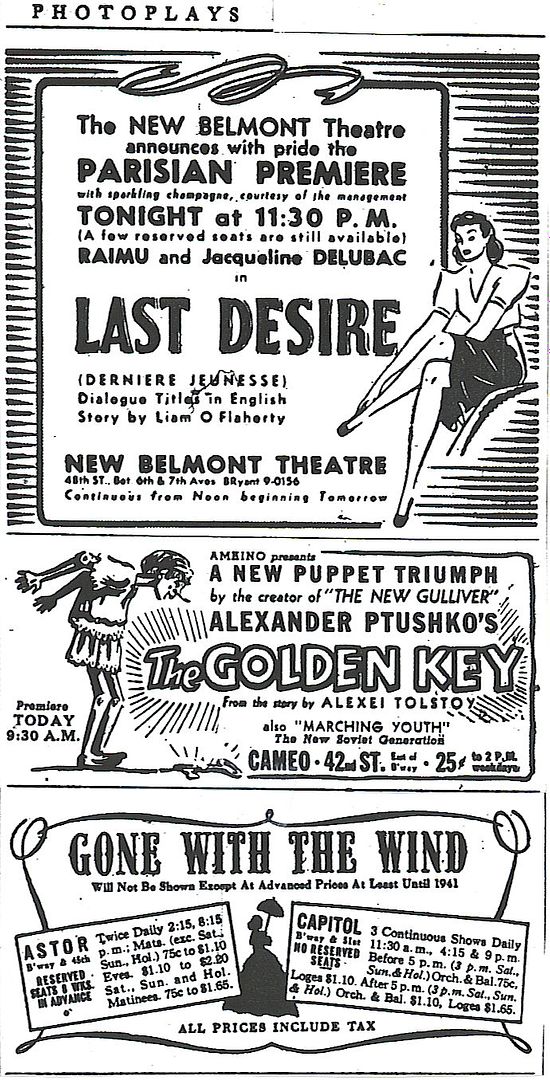
Posted on 12/20/2009 4:58:35 AM PST by Homer_J_Simpson





It - as you must be aware - is "Gone With the Wind", the gargantuan Selznick edition of the Margaret Mitchell novel which swept the country like Charlie McCarthy, "The Music Goes 'Round" and similar inexplicable phenomena; which created the national emergency over the selection of a Scarlett O'Hara and which, ultimately, led to the $4,000,000 production that faced the New York public on two Times Square fronts last night, the Astor and the Capitol. It is the picture for which Mr. Gallup's American Institute of Public Opinion has reported a palpitantly waiting audience of 56,500,000 persons, a few of whom may find encouragement in our opinion that they won't be disappointed in Vivian Leigh's Scarlett, Clark Gable's Rhett Butler or, for that matter, in Mr. Selznick's Miss Mitchell.
(snip)
Anyway "it" has arrived at last, and we cannot get over the shock of not being disappointed; we had almost been looking forward to that.
(snip)
...Technicolor - although we still feel that color is hard on the eyes for so long a picture.
Who signed the "certificate of authenticity"?
(From Wikipedia)
The Music Goes ‘round
The music was written by Edward Farley and Mike Riley, the lyrics by Red Hodgson, and was published in 1935. It was included on the 1961 Ella Fitzgerald album Clap Hands, Here Comes Charlie (Verve). The song was recorded by Tommy Dorsey and became a hit in 1936.[1] The song was the musical interlude for the Columbia movie “The Music Goes ‘round” in 1936.
“The Music Goes ‘round” (1936).
Notes for the Record on “Music Goes ‘round,” at the Capitol, and Other Recent Arrivals. New York Times. February 22, 1936.
“If we really wanted to be nasty about it, we could say that this Farley-Riley sequence is the best thing in the new picture. At least it makes no pretense of being anything but a musical interlude dragged in by the scruff of its neck to illustrate the devastating effect upon the public of some anonymous young busybody’s question about the workings of a three-valve sax horn. Like the “March of Time,” it preserves in film the stark record of a social phenomenon—in this case, the conversion of a song hit into a plague, like Japanese beetles or chain letters.”
Having lived in the deep South, which was only decades from the Civil War, as a child, I can attest to the authenticity of much of the film. The culture had not changed all that much except for the absence of slavery and the poverty left by the war. I love the film and the book . They speak to my6 heart because I recognize a part of myself in it. It’s sort of like when people say about Sarah Palin,”She’s like me.” You know what you feel even if you can’t quite put your finger on it.
HJS, thank you for posting this. I loved all the pictures that I had not seen before. Brought back a lot of memories.
I worked in Virginia with a woman from old Virginia stock. Her grandmother told her the story of her great-great grandmother who ran guns across Yankee lines on horseback. When challenged by Yankee pickets she galloped off. They fired, whether into the air or at her in vain is a fact lost to history. Her grandmother ended the story, dripping with indignation at the ungentlemanly Yankees, “... and her a mother!”
Disclaimer: Opinions posted on Free Republic are those of the individual posters and do not necessarily represent the opinion of Free Republic or its management. All materials posted herein are protected by copyright law and the exemption for fair use of copyrighted works.